Related Research Articles

The Napoleonic era is a period in the history of France and Europe. It is generally classified as including the fourth and final stage of the French Revolution, the first being the National Assembly, the second being the Legislative Assembly, and the third being the Directory. The Napoleonic era begins roughly with Napoleon Bonaparte's coup d'état, overthrowing the Directory, establishing the French Consulate, and ends during the Hundred Days and his defeat at the Battle of Waterloo. The Congress of Vienna soon set out to restore Europe to pre-French Revolution days. Napoleon brought political stability to a land torn by revolution and war. He made peace with the Roman Catholic Church and reversed the most radical religious policies of the Convention. In 1804 Napoleon promulgated the Civil Code, a revised body of civil law, which also helped stabilize French society. The Civil Code affirmed the political and legal equality of all adult men and established a merit-based society in which individuals advanced in education and employment because of talent rather than birth or social standing. The Civil Code confirmed many of the moderate revolutionary policies of the National Assembly but retracted measures passed by the more radical Convention. The code restored patriarchal authority in the family, for example, by making women and children subservient to male heads of households.

Jean-Baptiste Antoine Marcelin Marbot, known as Marcellin Marbot, was a French general, famous for his memoirs depicting the Napoleonic age of warfare. He belongs to a family that has distinguished itself particularly in the career of arms, giving three generals to France in less than 50 years, including his elder brother, Antoine Adolphe Marcelin Marbot.

Events from the year 1809 in Canada.
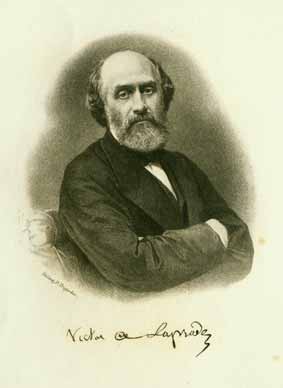
Pierre Martin Victor Richard de Laprade, known as Victor de Laprade, was a French poet and critic.
Jean Michel Constant Leber was a French historian and bibliophile.

La Comédie humaine is Honoré de Balzac's 1829–48 multi-volume collection of interlinked novels and stories depicting French society in the period of the Restoration (1815–30) and the July Monarchy (1830–48).

David Hendrik, Baron Chassé was a Dutch soldier who fought both for and against Napoleon. He commanded the Third Netherlands Division that intervened at a crucial moment in the Battle of Waterloo. In 1830 he bombarded the city of Antwerp as commander of Antwerp Citadel during the Belgian Revolution.

Lieutenant-General Charles Nicolas Victor Oudinot, 2nd Duc de Reggio, the eldest son of Napoleon I's marshal Nicolas Oudinot and Charlotte Derlin, also made a military career.

Eliakim Carmoly was a French scholar. He was born at Soultz-Haut-Rhin, then in the French department of Haut-Rhin. His real name was Goschel David Behr ; the name Carmoly, borne by his family in the fourteenth and fifteenth centuries, was adopted by him when quite young. He studied Hebrew and Talmud at Colmar; and, because both French and German were spoken in his native town, he became proficient in those languages.
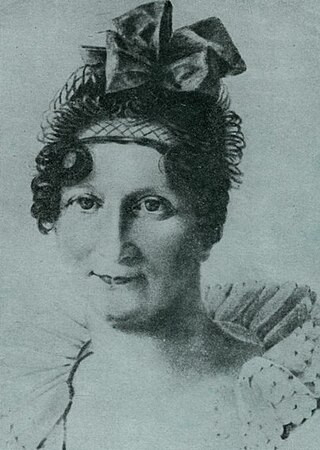
Agathe de Rambaud was the official nurse of the royal children, and particularly was in charge of the Dauphin from 1785 to 1792. She was born in Versailles as Agathe-Rosalie Mottet and was baptized in the future cathedral Saint-Louis of Versailles, on 10 December 1764. She died in Aramon, in the département of Gard, on 19 October 1853.
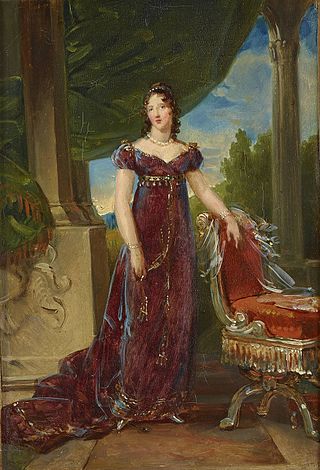
Dorothea von Biron, Princess of Courland, Duchess of Dino, Duchess of Talleyrand and Duchess of Sagan, known as Dorothée de Courlande or Dorothée de Dino, was a Baltic German noblewoman, and the ruling Duchess of Sagan between 1845 and 1862. Her mother was Dorothea von Medem, Duchess of Courland, and although her mother's husband, Duke Peter von Biron, acknowledged her as his own, her true father may have been the Polish statesman Count Aleksander Batowski. For a long time, she accompanied the French statesman Charles Maurice de Talleyrand-Périgord; she was the separated wife of his nephew, Edmond de Talleyrand-Périgord.
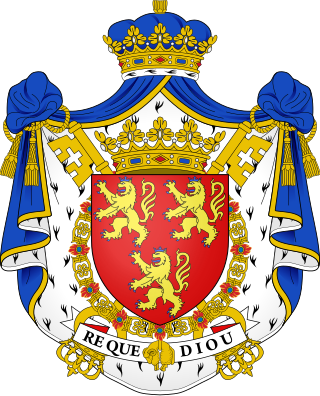
The House of Talleyrand-Périgord is an ancient French noble house. A well-known member of this family was Charles Maurice de Talleyrand-Périgord (1754–1838), who achieved distinction as a French statesman and diplomat. The family name became extinct in 2003 upon the death of Violette de Talleyrand-Périgord.

Duke of Montebello was a title created by French Emperor Napoleon I in 1808 as a victory title for Marshal Jean Lannes, one of Napoleon's most daring and talented generals. Lannes commanded the advance guard in the crossing of the Alps in 1800 and was instrumental in winning the Battle of Montebello.
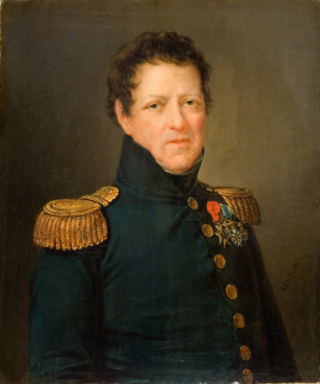
General Amédée Louis de Cubières, known as Despans-Cubières, was a French general and politician.
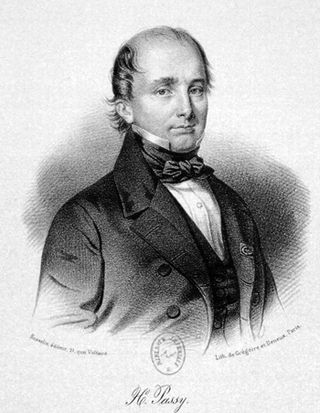
Hippolyte Philibert Passy was a French cavalry officer, economist and politician.

Louis Gaspard Amédée, baron Girod de l'Ain was a French lawyer and politician who became Minister of Public Education and Religious Affairs in 1832.

Étienne Louis Hector de Joly was a French Freemason and politician. He was minister of the interior and minister of justice in the Constitutional Cabinet of Louis XVI.
Philadelphe-Maurice Alhoy was a 19th-century French journalist, writer and playwright, born and died in Paris.

The Normandie built in 1835, was a French paddle steamer working in conjunction with her sister ship the Seine (1836) on the lower reaches of the Seine. The route she serviced was between Le Havre and Rouen via Honfleur with secondary stops along the way. She gained fame by being a participant in the retour des cendres of Napoleon to France.
Antoine de La Torré was a French officer who participated in the French conquest of Algeria.
References
- ↑ Marcellin Berthelot (eds.), The Great Encyclopedia, vol. 19, Paris, Lamirault, 1885-1902, p. 469.
- ↑ "The First Book of Napoleon, the Tyrant of the Earth: Written in the 5813th Year of the World ..." Sold by Longman, Hurst, Rees, & Orme : J.J . Stockdale. Apr 15, 1809. Retrieved Apr 15, 2020– via Internet Archive.
- ↑ Modeste Gruau de La Barre, called comte de la Barre Modeste Gruau (Apr 15, 1855). "Lodewijk de Zeventiende, de laatste en wettige koning van Frankrijk en de ..." H. Nijgh. Retrieved Apr 15, 2020– via Internet Archive.
- ↑ Modeste Gruau de la Barre, Louis (Apr 15, 1848). "Intrigues dévoilées; on Louis xvii, dernier roi légitime de France, décédé 1845 [an attempt to ..." Retrieved Apr 15, 2020– via Internet Archive.
- ↑ "L'évangile primitif". Apr 15, 1860. Retrieved Apr 15, 2020– via Internet Archive.
- ↑ Modeste Gruau de La Barre, called comte de la Barre Modeste Gruau (Apr 15, 1869). "Réponse à la Réflexion néerlandaise de M. de Dompierre de Chaufepié: Breda ..." H.C. Susan. Retrieved Apr 15, 2020– via Internet Archive.
- ↑ "La branche aînée des Bourbons, veuve et enfans du duc de Normandie, Louis xvii, devant la justice". J.J. Van Brederode. Apr 15, 1871. Retrieved Apr 15, 2020– via Internet Archive.